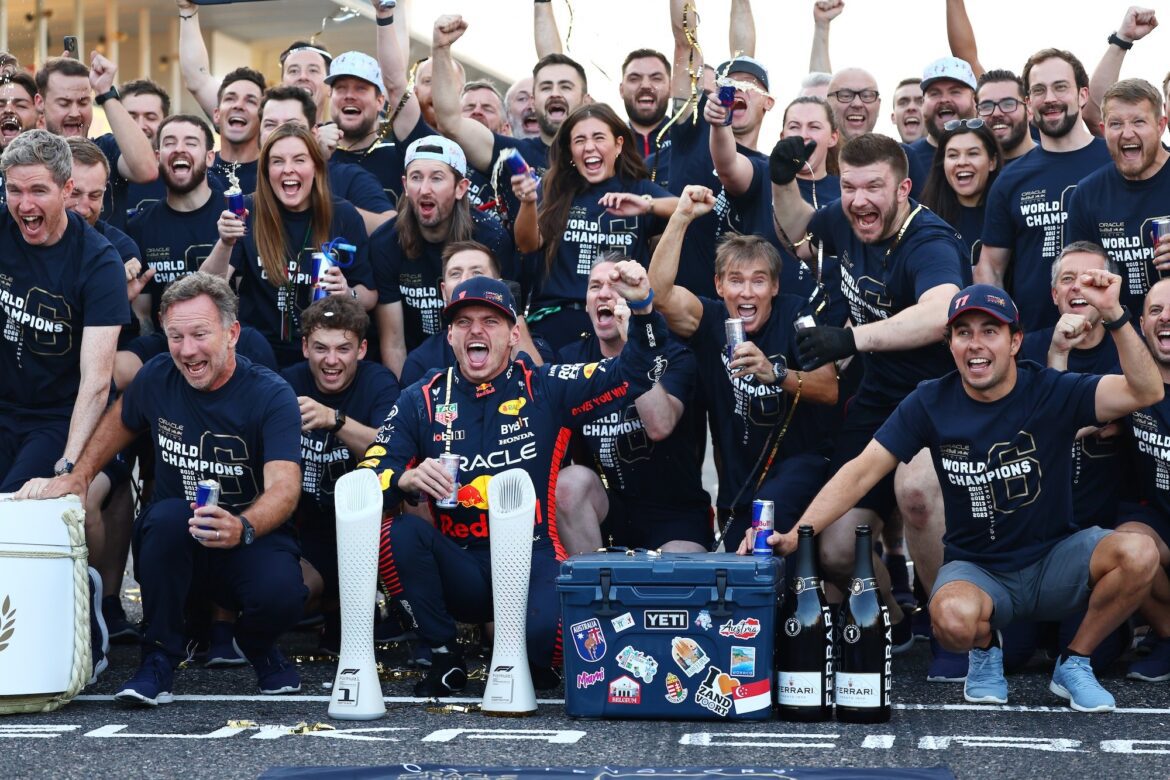The Shift in Leadership at Red Bull Racing: A Deep Dive into Recent Changes
The recent departure of Christian Horner from Red Bull Racing marks a significant turning point for a team that has experienced a series of internal changes since its peak during the 2023 Formula 1 season. Over the past two years, Red Bull has seen the exit of several key figures across various departments, leading to a situation that, according to insights from RacingNews365, has compromised the team’s internal stability and directly contributed to Horner’s departure on Wednesday, September 9.
A Historical Context of Success
Red Bull Racing has long been a dominant force in Formula 1, especially during the season when they clinched victory in 21 out of 22 races. However, the team has faced considerable challenges since reaching such heights. The departure of Horner, who served as team principal, signals the culmination of a gradual deterioration of the technical and structural framework that supported their success.
Key Departures and Their Impact
The team has lost numerous pivotal figures since their triumphant run. Among the most significant exits is that of Adrian Newey, Red Bull’s chief technical officer, whose influence on the team was critical. Newey had been a cornerstone of the team’s engineering prowess since the era of Sebastian Vettel, skillfully maintaining high performance levels even amidst internal challenges. His departure, announced early in 2025, was preceded by a gradual withdrawal from daily operations, having shifted his focus to Aston Martin in mid-2024. The loss of Newey has had a profound impact on the team’s performance; the RB20 model saw a decline in effectiveness following his exit, and Pierre Waché, who took over his responsibilities, struggled to restore the car’s previous dominance. This trend continued with the RB21 in the current season, underscoring the difficulties associated with losing such a pivotal figure in the engineering department.
The Strategic Void Left by Key Figures
Another notable departure was that of Jonathan Wheatley, the team’s sporting director, who played a crucial role in decision-making during races. His absence became glaringly apparent in critical moments, such as the Saudi Arabian Grand Prix, where a misjudgment cost Max Verstappen valuable time, and the Spanish Grand Prix, which saw a poorly timed instruction resulting in a collision with George Russell. Wheatley was as essential to the team’s race strategy as Newey was to its engineering success, and his exit left a noticeable void.
The Influx of New Talent and Future Instability
Will Courtenay, a strategist who has already agreed to transfer to McLaren for the 2026 Formula 1 season, adds another layer of uncertainty to Red Bull Racing’s future. While Courtenay continues to fulfill his role, his upcoming transition creates an internal rift that complicates the team’s dynamic. Christian Horner made efforts to emphasize the importance of his successor, Hannah Schmitz, but the impending changes have inevitably led to questions about consistency and performance.
The Beginning of a Structural Shift
The process of restructuring within Red Bull Racing began as early as 2023, with the exit of Rob Marshall, Newey’s right-hand man and a significant figure in the team’s resurgence during the ground-effect era. His move to McLaren was a clear indication of the deep-rooted changes taking place within Red Bull, signaling a shift that would ultimately impact the entire organization.
The Departure of Key Operational Staff
Adding to the structural challenges, Lee Stevenson, Verstappen’s chief mechanic, also left the team. Stevenson was instrumental in bridging the gap between engineering and operational aspects of the car, having been part of every victory that Verstappen achieved up to that point. His departure to Sauber in March of this year marked yet another critical loss for Red Bull, amplifying the issues the team has been facing.
The Accumulation of Changes and Their Consequences
With all these significant losses accumulating, the sustainability of Horner’s position became increasingly tenuous. The crisis currently unfolding within Red Bull Racing is not a sudden occurrence; rather, it is the result of a slow and quiet dismantling of the foundation that once supported the team’s success. The cumulative effect of these departures raises questions about the future trajectory of Red Bull Racing and its ability to remain competitive in the high-stakes world of Formula 1.
Analyzing the Current Landscape
The departure of Horner is not just a personnel change; it represents a broader narrative of instability within one of Formula 1’s most successful teams. The organization’s internal dynamics are shifting, with new leaders stepping in to fill the gaps left by veteran figures. These transitions can often lead to turbulence, particularly in a sport where performance is paramount, and the pressure to succeed is immense.
As Red Bull Racing moves forward, the challenge will be to foster a sense of continuity amid the whirlwind of changes. New leadership must strive to maintain the high standards set by their predecessors while also bringing fresh perspectives and innovations to the team. This delicate balance will be crucial in ensuring that Red Bull Racing remains a formidable contender in the seasons to come.
Conclusion
In conclusion, the recent changes at Red Bull Racing reflect a significant transformation within a team that has enjoyed remarkable success. The departures of key personnel, including Christian Horner, Adrian Newey, and Jonathan Wheatley, signal a critical juncture for the organization. As Red Bull navigates this period of upheaval, the focus will be on how well they can adapt and rebuild, drawing on both their rich history and the new talent that will shape their future. The path ahead may be challenging, but with the right strategies and leadership, Red Bull Racing can potentially reclaim its place at the forefront of Formula 1.
